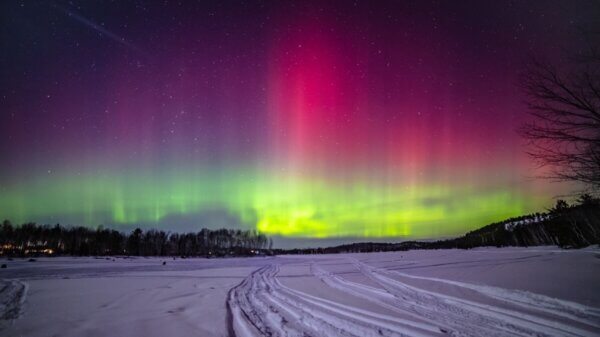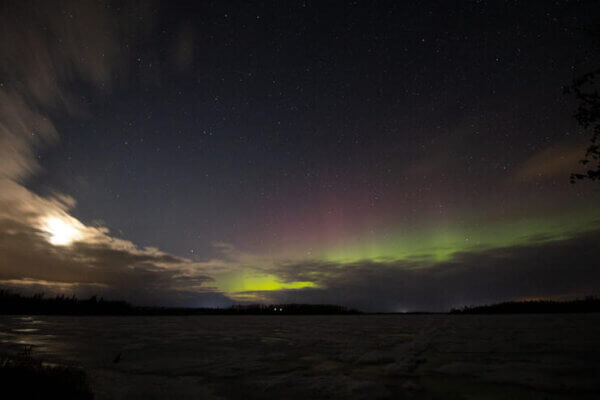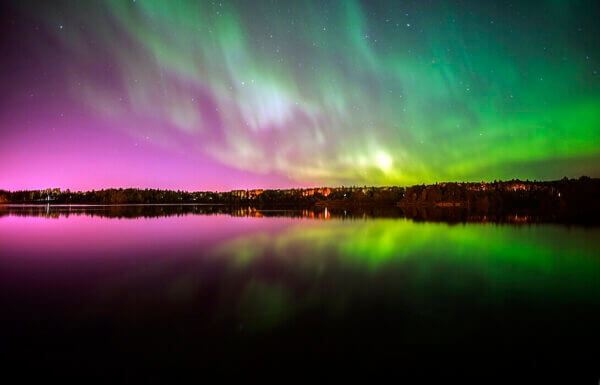Witnessing the mesmerizing Northern Lights, the Aurora Borealis, is on many people’s bucket lists. However, finding the best locations and understanding how to experience this natural phenomenon can be challenging.
Imagine missing out on the chance to see the breathtaking dance of colors across the night sky because you didn’t have the right information or guidance. Don’t let your dream of witnessing this awe-inspiring spectacle fade away.
The Northern Lights in Timmins, The Aurora Borealis Guide, is your ultimate companion to experiencing this magical phenomenon. This comprehensive guide provides all the information you need to plan your trip, including the best viewing spots, optimal times, and tips for capturing stunning photographs.
With this guide in hand, you’ll have insider knowledge on maximizing your chances of witnessing the Northern Lights in all their glory. Don’t let this once-in-a-lifetime opportunity slip away – get The Northern Lights in Timmins Guide today, and make your dream a reality!
The Northern Lights in Timmins: The Aurora Borealis
The best time to see the Northern Lights in Timmins is during the winter months, from September to April. However, the lights can be seen year-round, depending on solar activity. The Kp index measures the solar activity that causes the Northern Lights. The Kp index ranges from 0 to 9, with 0 being the lowest level of activity and nine being the highest. The higher the Kp index, the more likely you will see the Northern Lights.
To see the Northern Lights, you must go to a place with little light pollution. Light pollution can make it difficult to see the faint light of the Aurora. Timmins is an excellent place to see the Northern Lights because it is in a rural area with little pollution. You must also go outside on a clear night because the Northern Lights are not visible in cloudy skies.
Once you find a dark, clear night, be patient. The Northern Lights can be unpredictable, so seeing them may take some time. But if you’re lucky enough to see them in Timmins, you’ll be treated to a magical sight. The lights are in various colours, including green, red, yellow, and blue. They can also be seen dancing and swirling across the sky.
If you plan to photograph the Northern Lights in Timmins, here are some tips you should keep in mind:

- Use a tripod to support your camera steady.
- Use a wide-angle lens to capture the full extent of the lights.
- Set your camera to a low ISO and a slow shutter speed.
- Use manual focus to ensure that your subject is in focus.
- Experiment with different exposure settings to find what works best for you.

If you plan to photograph the Northern Lights, dress warmly and bring a flashlight. The nights can be cold and dark, and you need a light to find your way around. The best time to photograph the Northern Lights is around midnight when the sky is darkest. The moon can wash out the lights, so it is best to photograph the lights on a moonless night. If the lights are faint, you may need a star tracker to keep your camera steady. Be patient and persistent. The Northern Lights can be unpredictable, so getting the perfect shot may take some time.
I hope this guide has helped you learn more about the Northern Lights in Timmins. If you are planning a trip to the city, be sure to add seeing the lights to your itinerary. It is an experience you will never forget.
In addition to the tips mentioned above, here are some other things you can do to increase your chances of seeing and photographing the Northern Lights in Timmins:
- Check the Aurora forecast to predict the best time to see the lights.
- Download an Aurora app to track the Aurora and find the best places to see it.
- Join an Aurora tour to find the best places to see the lights and learn more about them.

Map
- Yonge-Dundas Square in Toronto is Now Called “Sankofa Square” - December 17, 2023
- Best Western Brooks’ SureStay Plus debuts in Alberta - December 16, 2023
- Air Canada Arrives in Tulum, Mexico as the First Canadian Airline - December 16, 2023




